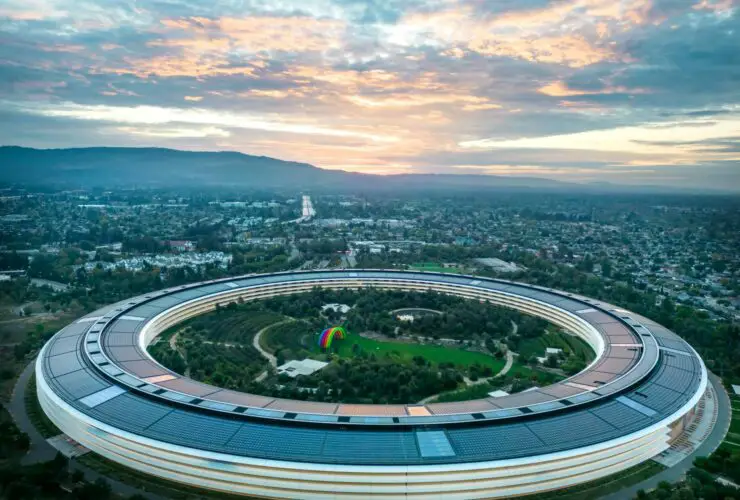How workspace design improves productivity in the workplace?
Employee workspaces are very important because they influence productivity in the workplace.
If you want to improve the productivity of people in your workplace, you can read the post here. Let’s look at all the variables that play a role in the quality and quantity of work produces and examine them in detail.
Ergonomics
This includes things like furniture, equipment, lighting & temperature.
Furniture
Furniture includes chairs, desks, sofas, file cabinets, shelving, etc. Furniture has the most obvious ergonomic impact. Chairs need to be comfortable, file cabinets need to easily open, shelving needs to be easily accessible for maximum productivity.
Equipment
Equipment includes things like computers, printers, phones, calculators, shredders, faxes, etc. Equipment is similar to furniture because employees need to be comfortable using them. Computer wires that are not properly placed hinder productivity, as does phones located away from the desk.
Lighting
Lighting can be both natural (sunlight) or artificial. Surprisingly, lighting impacts the way people work. Poor lighting can cause eye strain and excessive light can cause glare. These can result in problems like headaches and tiredness.
Room temperature
Temperature affects people physically. Slightly cold temperatures cause discomfort that prevents people from focussing on tasks. Warm temperatures make employees feel sleepy. Extreme temperatures can prevent work.
Noise
This includes music, employee conversations, equipment sounds, outside noise, and any other potential distraction that involves sound. Noise issues can result in employees being less productive due to their inability to focus and concentrate.
Noise is usually dependant on the type of workspace. Open offices and cubicles will have more noise than private offices. However, the best design for avoiding noise is the virtual office because sound distractions can be eliminated by simply moving to a quieter area.
Appearance
This includes things that make the workplace look good and include walls (insulation, type, color, etc), floors (carpeting, cement, etc), ceilings, doors, and windows. Appearance is important because an outdated or poorly decorated workspace can be demoralizing.
Physical size
This is the amount of physical space available for work. There needs to be adequate space for employees to perform their jobs, or their productivity will suffer. Cramped work areas also cause arguments and other conflicts as people move into each other’s personal space.
This does not mean that more space is always better. in fact, sometimes less space is more desirable because it is easier to access need information and other employees.
Food & beverage
Most organizations provide unlimited tea and coffee for their employees. However, there’s more that can be done. Many companies provide free lunch and fruits in the morning. Providing food and beverages to employees not only makes them more productive but also enhances their happiness.
Plants
Plants create a very positive work environment and also express the view of building a green company. Having lots of plants in the workspace also gives us a feeling of being in the presence of nature away from the polluted world outside.
Space
Having a lot of open spaces in the workplace can not only help employees move freely but also creates the impression of an open environment. A little bit of extra space also enables employees to stretch out once a while.
Books
The good thing about having books in the workplace is that it encourages reading habits, especially for those who don’t like reading books. Also having books about performing certain jobs well, also increases productivity. If you have the space available, try to create a mini library where your staff can borrow books or read them in their free time.
Artwork & posters
When it comes to putting artwork and posters, there are plenty of choices available. You can actually put posters of values your company believes in, your culture, famous entrepreneurs, and even motivational quotes.
Having art in the workplace has been shown to increase productivity and creativity. Art enhances aesthetics in the workplace and also is something interesting to look at.
Personal booths
I have seen a lot of coworking spaces with small personal booths for helping people spend some quiet time. Personal booths not only help you to focus on your work but also make phone calls without bothering the people around you.
Cleanliness
Dirty offices are not only disturbing to look at but also distract people from doing work. Overall, such an environment makes you feel unproductive and uncomfortable to work in. Also speaking of cleanliness, it is encouraged for employees to keep their desks clean or organized. A clean desk helps the mind to focus compared to a cluttered desk.
If you are a startup founder, aspiring entrepreneur, or running a business, take some of our assessments to help you build a better business.
FAQ – Employee Workspaces and Productivity
Q: Why are employee workspaces important in influencing productivity? A: Employee workspaces play a crucial role in productivity because they affect factors such as comfort, focus, and overall well-being. When employees have ergonomic furniture, proper lighting, suitable temperature, and a conducive environment, they are more likely to work efficiently and produce higher quality output.
Q: What is the significance of ergonomics in employee workspaces? A: Ergonomics refers to the design and arrangement of furniture, equipment, lighting, and temperature in a workspace. It directly impacts employee comfort and health, which in turn affects their productivity. By ensuring ergonomic elements, such as comfortable chairs, accessible file cabinets, proper computer placement, and adequate lighting, employers can enhance productivity levels.
Q: How does furniture impact productivity in employee workspaces? A: Furniture, including chairs, desks, file cabinets, and shelving, has a direct ergonomic impact on productivity. Comfortable chairs and well-designed desks promote good posture and reduce physical strain, enabling employees to focus on their tasks effectively. Additionally, easily accessible storage and organization solutions, like file cabinets and shelving, contribute to a more efficient workflow.
Q: What role does equipment play in employee workspaces? A: Equipment, such as computers, printers, phones, and other tools, affects productivity by influencing employees’ comfort and ease of use. Ensuring that equipment is in good working condition, properly placed, and easy to access enables employees to perform their tasks efficiently without unnecessary disruptions or delays.
Q: How does lighting impact productivity in the workplace? A: Lighting, whether natural or artificial, has a significant impact on how people work. Insufficient lighting can cause eye strain and reduce focus, while excessive light can lead to glare and discomfort. By providing adequate lighting conditions, employers can create a visually comfortable workspace that promotes productivity and reduces potential health issues.
Q: What is the relationship between room temperature and employee productivity? A: Room temperature affects employees both physically and mentally. Slightly cold temperatures can cause discomfort and distract employees from their work, while warm temperatures may induce drowsiness. Maintaining a moderate and comfortable temperature in the workspace helps employees stay focused and engaged.
Q: How does noise affect productivity in employee workspaces? A: Noise, whether from conversations, equipment sounds, or external factors, can significantly impact employee productivity. Excessive noise levels can disrupt concentration, impair communication, and hinder cognitive performance. Providing a quiet work environment or offering solutions to minimize noise distractions, such as virtual offices or designated quiet areas, can enhance productivity.
Q: How does the appearance of a workspace influence productivity? A: The appearance of a workspace, including walls, floors, ceilings, doors, and windows, can affect employees’ mood, motivation, and overall satisfaction. Outdated or poorly decorated workspaces may create a demoralizing atmosphere, while visually appealing and well-maintained environments contribute to a positive mindset and higher productivity.
Q: Why is the physical size of workspaces important for productivity? A: Having adequate physical space in work areas is crucial for employees to perform their tasks efficiently. Cramped or congested workspaces can lead to discomfort, hinder collaboration, and create conflicts among employees. However, it’s essential to strike a balance, as excessive space can also lead to inefficiency. Optimal workspace design should provide enough room for employees to work comfortably while promoting easy access to information and colleagues.
Q: How does the provision of food and beverages impact employee productivity? A: Offering food and beverages, such as unlimited tea and coffee, free lunch, and morning fruits, can contribute to increased productivity and employee happiness. By providing nourishment, employers are fulfilling employees’ basic needs and promoting their well-being. Proper nutrition and access to refreshments throughout the day can help sustain energy levels, improve focus, and enhance overall job satisfaction, leading to increased productivity.
Q: How do plants contribute to the productivity of employee workspaces? A: Incorporating plants into the workspace creates a positive work environment and promotes a sense of being in a natural, less polluted space. Plants have been shown to improve air quality, reduce stress levels, and increase productivity. They also contribute to the aesthetic appeal of the workspace, fostering a pleasant and calming atmosphere.
Q: Why is having open space beneficial for employee productivity? A: Having open spaces in the workplace allows employees to move freely and fosters a sense of openness. It promotes collaboration, communication, and a positive work culture. Open spaces also provide employees with the opportunity to stretch and relax, which can contribute to their overall well-being and productivity.
Q: How do books and reading materials impact productivity in the workplace? A: Having books in the workplace encourages reading habits and continuous learning. They can serve as resources for improving job performance and acquiring new skills. A mini library or designated reading area provides employees with a chance to unwind, stimulate their minds, and find inspiration, ultimately boosting productivity and fostering a culture of personal growth.
Q: How does artwork and posters affect productivity in employee workspaces? A: Artwork and posters contribute to the aesthetics of the workspace, creating an engaging and visually appealing environment. They can reflect the company’s values, culture, and provide motivational messages. Art in the workplace has been shown to enhance creativity, improve mood, and increase productivity by fostering a positive and inspiring atmosphere.
Q: What are the benefits of personal booths in employee workspaces? A: Personal booths or quiet spaces provide individuals with a dedicated area for focused work or making private phone calls. These spaces help minimize distractions and interruptions, allowing employees to concentrate on their tasks. Personal booths promote privacy, reduce noise-related disruptions, and contribute to a more productive and harmonious work environment.
Q: How does cleanliness impact productivity in the workplace? A: Cleanliness is essential for maintaining a conducive work environment. Dirty offices can be visually distracting and create a sense of discomfort and unproductivity. A clean and well-organized workspace promotes focus, reduces stress, and enhances efficiency. Encouraging employees to keep their desks clean and clutter-free further supports productivity by facilitating a clear and organized mindset.





